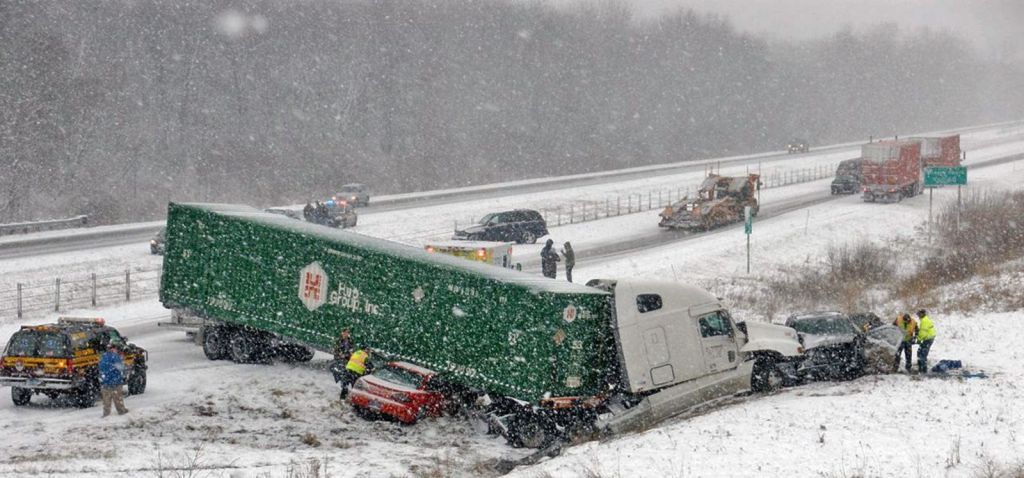Trucking Injury Rates And Cost Report Released
A new report by the Washington State Department of Labor & Industries claims that the injury rates and costs of workers compensation claims of workers in the trucking industry are among the highest in the state. This report studied the number of workers compensation claims, as well as the cost and amount of time off for injury, which covered a period from 2006 to 2012.
Read The Full Report here.
Elaine Fischer, a spokeswoman for the state labor department said the study found that 1 in every 13 truck drivers have a serious work-related injury that causes them to miss work for a duration of time.
“That’s a huge problem for the industry… and it’s also a hardship for the drivers that are injured and miss work because they don’t make the same pay and they may have difficulty getting back to work eventually,” Fischer said in a phone interview with “Land Line Now.”
Sprains, strains and overexertion accounted for the most trucking-related injuries in Washington State, with costs exceeding $107 million and resulting in 576,000 lost-work days. About 70% of these injuries were to drivers. Many of the injuries occurred while connecting or disconnecting a trailer to the truck or opening stuck trailer doors. Falls were also a leading cause of costly claims involving lost-work days.
The report includes accepted claims from 2006 to 2012. Two main groups were medical-only and lost work time. Medical-only claims involve only medical cost to treat the injury but no time off for work is given. Lost work time claims include injuries with four or more days of compensation, total permanent disability, fatality or being kept on salary by employer.
Because owner-operators are not required to have workers compensation coverage, their injury experience is not included in the report. Neither are the experiences of truckers working in “in non-trucking industries” such as log carriers, who are included in the states’ forestry and fishing industry. A “full-time employee” is defined as someone who works at least 2,000 hours a year.
Over the six-year period of the report, the study found 52 total fatalities in the trucking industry, including 23 in general freight, 12 in LTL, eight in specialized, and nine in waste collection – or roughly one fatality for every 4,430 full-time employees in the trucking industry
One of those involved a garbage truck driver who was killed when another vehicle ran a red light and struck the trash hauler head-on. The truck driver, who was not wearing a seatbelt, was ejected out the front window of the vehicle.
Over 73 percent of all truck driver fatalities were vehicle-related, with 48 percent categorized as loss of vehicle control without a collision with another vehicle on the highway.
Six died from being struck by either their own or another vehicle while on foot. Seven were struck by, crushed, or caught in other objects. Four died from falls. One out of every 19 trucking industry employees had an accepted, compensable injury claim during the survey years, more than twice the rate of compensable claims in all other industries.
Non-fatal injuries totaled 6,903 lost work time claims, about 987 per year. The report states the total workers’ compensation cost for these injuries was more than $316 million, or the cost of an additional 45 miles of single-lane on Interstate 5. Seventy-three percent of compensable claims were filed by drivers, while 13 percent were filed by material handlers.
The study also found that drivers account for 70 percent of all injuries, 70 percent of the costs, and over 75 percent of the time-loss days. The report also includes an extensive section on prevention targets for employers as well as drivers. Those targets include investing in cabs and trailers with “adequate hand holds.”
“Injury rates in trucking are far above the state average for all other industries combined,” said Caroline Smith, an epidemiologist for the department’s Safety and Health Assessment and Research for Prevention program, and the lead researcher on the study. “In an industry that continues to be plagued by a shortage of qualified drivers, it’s vital that we keep the ones we have safe and working.”
Drivers are encouraged to use three points of contact when entering or exiting a cab or trailer, and not to twist torsos when entering or exiting. Employers are also encouraged to provide drivers with the tools they need to do the job safely, such as pallet jacks, forklifts and extra workers to help unload cargo.
The department said it continues to work with trucking industry leaders, safety and health professionals and drivers to identify workplace hazards and low-cost, simple solutions. They include:
Source: Land Line Magazine









